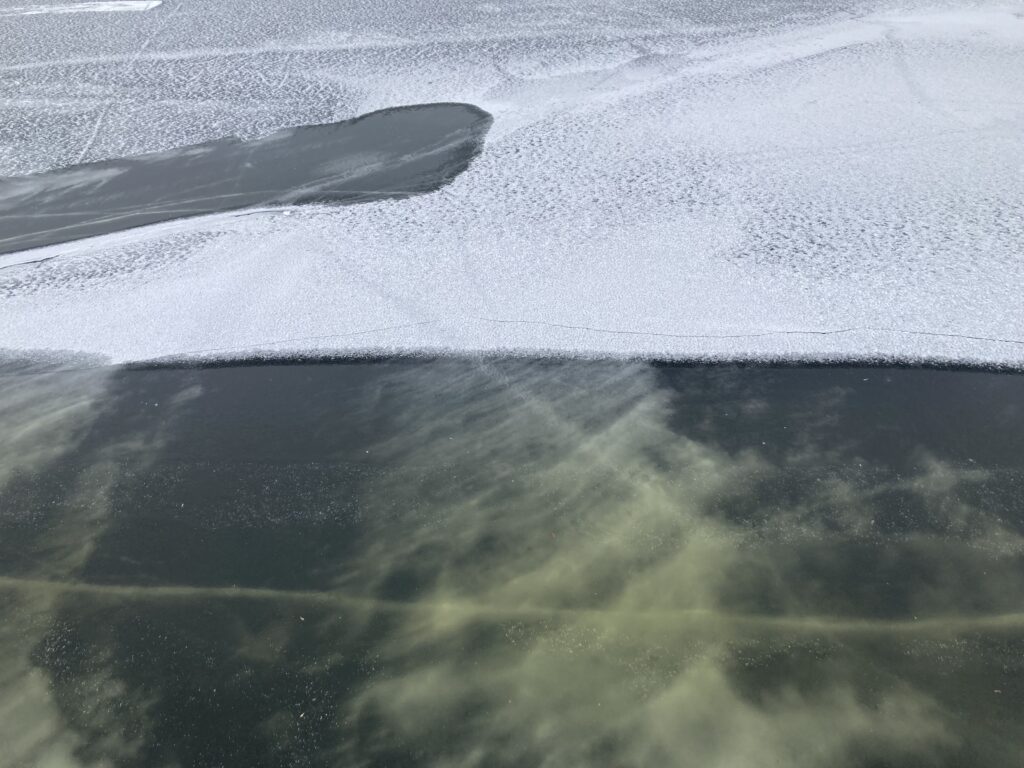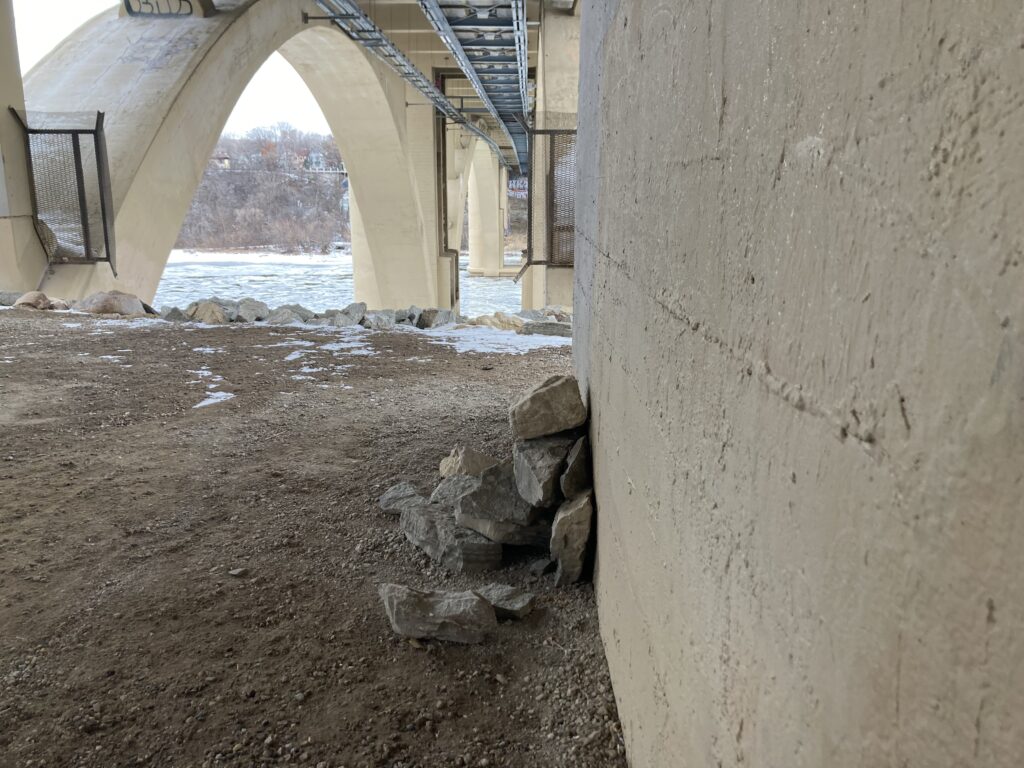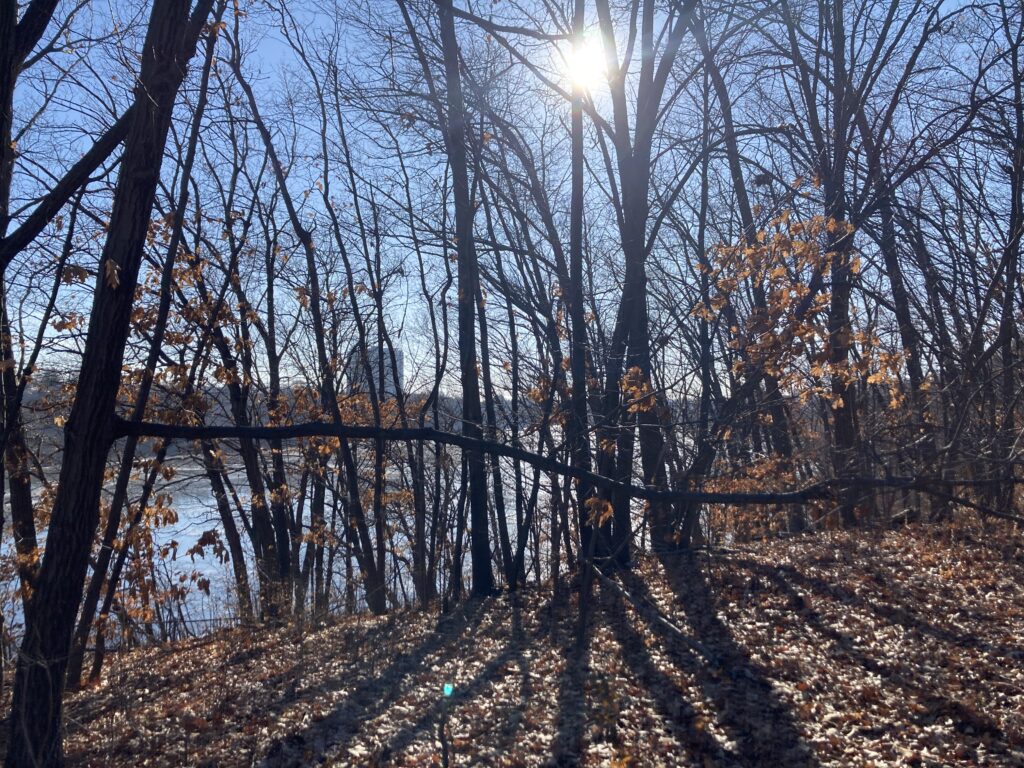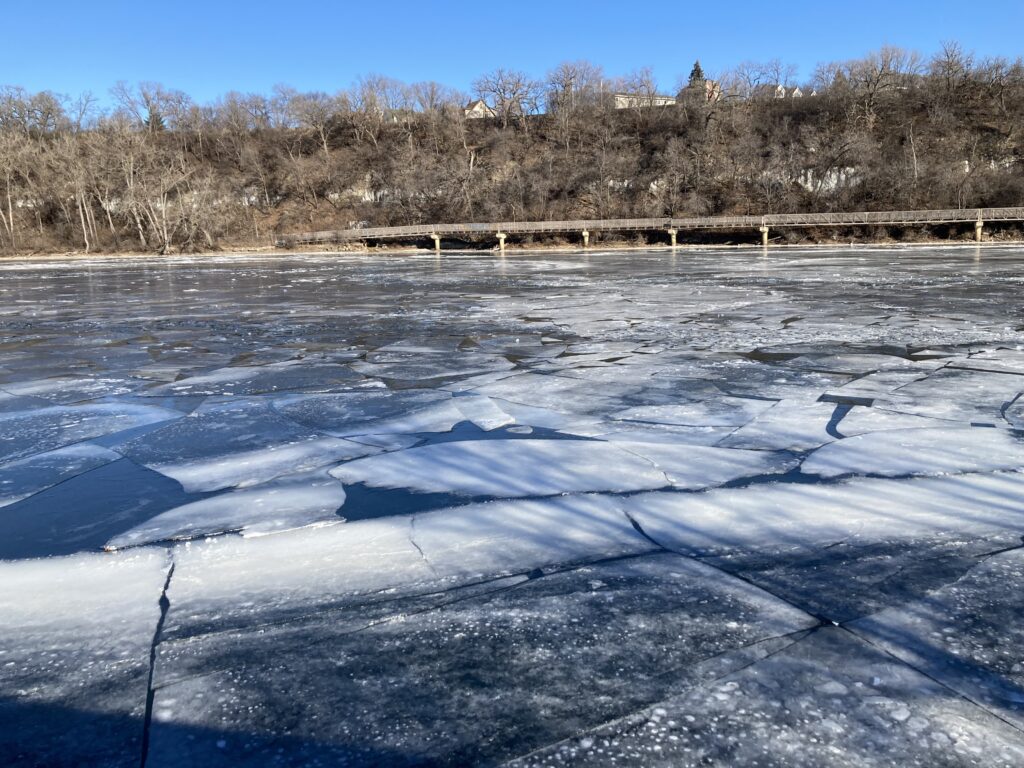6.1 miles
flats and back
24 degrees / flurries
Warmer today! Still wore lots of layers, but it wasn’t close-school cold like yesterday. After reading my post from a year ago when I wrote about running to the frozen springs in the flats, I decided to do it again this year. On my way north, I started chanting triple berries:
strawberry/blueberry/raspberry
then: mystery/history/magical . . .illusion/confusion/contusion
Then I was inspired by what I noticed:
bright orange coat
speeding cars
little dog
blue trash can
yellow shirt
gray-white sky
falling flakes
empty bench
When I reached the spring, I could hear it falling from the rock, but couldn’t see it, hidden behind the thick ice. Also heard but didn’t see the water it left on the road as cars whooshed over it.
Stopped at the river to check out the surface. Very cool. I took some pictures but I’m not sure they can capture the opaque greenish ice. It was a grayish-green, drab and looked slushy and cold and thick.

And I stopped at my favorite sliding bench and looked down at the white sands beach. Quiet, empty, white with snow, not sand.
Early on in the run, I greeted Dave, the Daily Walker. Hi Dave! Hi Sara! How are you doing? I’m good. How are you doing? I’m out here.
added a few hours later: I almost forgot something I was thinking about. As I listened to the song, Remember (lullaby) from Coco, I thought about people I miss and remembering them and then I thought about how sometimes it’s more than memory that helps me stay connected, like the time I opened my mom’s old book and saw her signature in the front. It was a physical trace of her reaching out to me. As I thought about this trace and the reaching out I remembered Diane Seuss commencement address and her discussion of Keats and his invisible hand reaching up from the grave. I’m glad I remembered the Keats bit because I remember having that thought then forgetting it almost immediately as I kept running.
an emptied mind — emptied of memories, emptied of everything
During my “on this day” practice, I encountered this phrase in Occasional Poem/ Jacqueline Woodson: zapped all the ideas from my head. I started thinking about this feeling of going blank or losing words or a sudden rush of nothing but space between your ears. What are some different ways that words describe being emptied of thought — the moment it happens and/or the feeling of emptiness?
the fish in us escaping, dandelion seed scattering, bees leaving the hive,
more than memory
I started a post yesterday (21 jan) and added this, intending, but failing, to finish it.
The wall is, for me and maybe me alone, a holy place. A place of pilgrimage, both full of meaning and void of meaning. I take photos, and the photos hold the memories still. The photos make the wall mean more than memory can, but with meaning, like a fact. No longer in motion, no longer something to which one can return and brush your fingers against (and feel the peeling paint).
*
Maybe a place like this pursues its meaning. Like when you say love and what you say means less than the actual word means. We love a place or a person, or we say a word, trying to stop time, hold something still. Maybe a place makes meaning how a dream might, in opposition to logic, inventing its own sense with presence.
*
Maybe we borrow meaning with a word, like how a photograph borrows a place, hoping meaning might remain recognizable if we say the word with the right angle of light, seeking something definite in a breath. How the impossible blue of a blue wall couldn’t be the blue of memory, a blue no photograph can contain.
Maybe to make a place holy, you must remember it more than real life allows, with all the truth of a squint, all the grace of peeling paint.
*
I’d like to look into one of those photographs, past the image, past what the image contains, past memory and regret and all the salt that sticks to the skin, into experience, into a love known true in one moment, undeniable, un-understandable, the kind of thing that splits everything in half. If I could find that photo of Cassie at the blue wall and step inside it and ask her to stay alive in a world where she was loved, maybe then I could finally know what a word means.
I could almost believe holiness is a process of remembering, but then I see the wall again, in all that sunlight, paint peeling, the blue not only the remembered blue, but more blue in the now of being seen, so I can barely stand to stand beside it, holy as it is with the fact of its own meaning.
This is the Place: A Blue wall in Leadville / Mathias Svalina
Words I’ve been studying: dream, memories, photograph, motion, still, light, breath, remember, squint, blue, real, love, now


